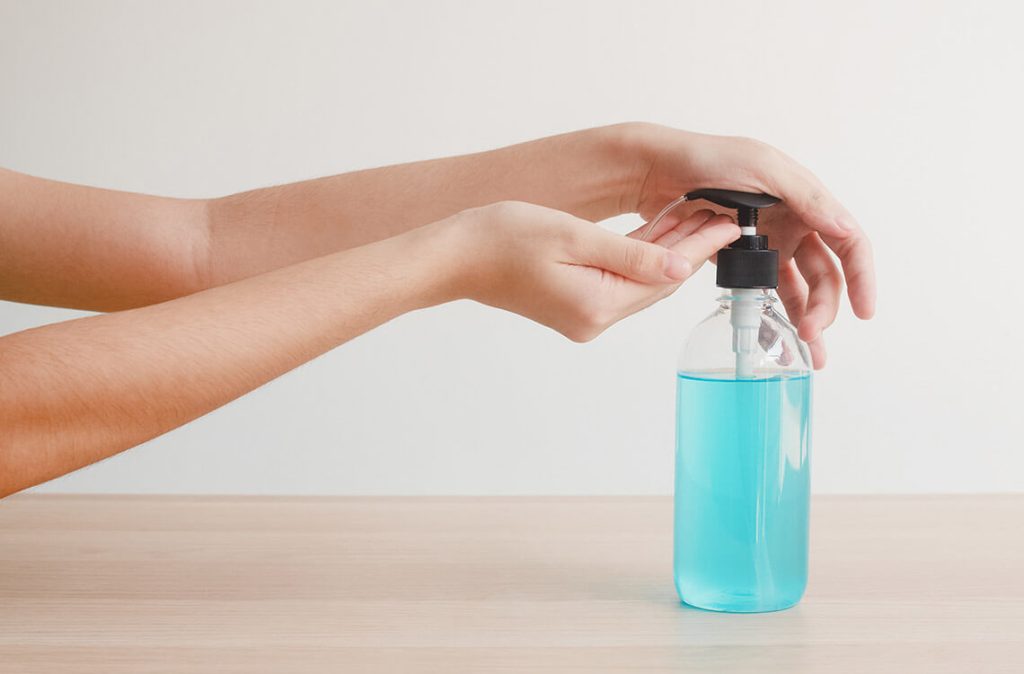Oftentimes, we may not think too hard about how hand sanitisers work. We may just squirt some on our hands, rub them together and pronto. Bye, germs!
But what if we told you there’s actually more to it than that? For instance, all sanitisers and disinfectants require some amount of time to work their magic. The longer it stays wet on your skin, the more effective it is at destroying germs and bacteria. However, many of us may not take this into consideration. So, chances are you may have been using your hand sanitiser all wrong this entire time and not even realise it. Hence, now is the time to learn more about what actually makes a hand sanitiser effective so that you know exactly what to look for in a sanitiser and how to use it properly.
How Sanitisers and Disinfectants Work
Most commercial sanitisers and disinfectants contain special chemicals that destroy bacteria, viruses, fungi and other disease-causing microorganisms. These ingredients prevent the spread and transmission of deadly infections that can easily be passed through human contact. The way they do this is through a process known as denaturation where certain chemicals break down the proteins in bacterial and viral cells. This causes those pathogens to lose their structure, preventing them from functioning properly.
Now, you may be wondering what’s the difference between sanitisers and disinfectants. Well, the two terms are merely official terminologies used to distinguish between two types of antimicrobial agents. Sanitisers are skin-safe antimicrobial products that can be used on the hands and disinfectants are ones that should only be used on surfaces. There can be some overlap in some cases. Some sanitisers can be used to disinfect surfaces and some disinfectants are safe for use on hands.
But not all antimicrobial products are created equal. At the end of the day, the effectiveness of a certain sanitiser or disinfectant depends on their performance in lab tests. That said, regardless of the percentage of pathogens that they target, the most important aspect about what makes sanitising and disinfecting products effective is contact time.
The Importance of Contact Time
Contact time (or wet time), is the length of time it takes for a disinfectant or sanitiser to properly destroy or deactivate a virus or bacteria. This usually translates to how long the substance needs to stay ‘wet’ on a surface in order for it to do its job. Once it evaporates or dries out, it is no longer effective. If the product dries out before it has a chance to kill all the pathogens, then those pathogens will survive and continue spreading.
Some sanitisers and disinfectants have different contact times. Those with longer contact times are less effective because you need to keep a surface wet with the product longer. Compared to a product with a short contact time where it only takes a few seconds for the product to work effectively. This also usually means you need to always use the correct amount of the product. This is so that it doesn’t dry out too fast when you apply it to a surface.
The contact time, of course, changes depending on the ingredient and how much there is of it in the product. For example, many commercial alcohol-based sanitisers contain around 75% ethanol. Research shows that for a hand sanitiser with that exact percentage of alcohol, you’d need to leave it wet on your hands for 15 seconds for all the germs to die. For alcohol-free sanitisers that contain 0.2% of benzalkonium chloride, for instance, the contact time is anywhere between 1 to 2 minutes.
Unfortunately, many people using hand sanitisers may not be aware about contact time. Some don’t even use enough to properly coat their hands and keep them wet for the right amount of time. Or sometimes, the product dries out too fast before it even has a chance to work properly. This means you end up wasting the product and not reaping the benefits it promises.
Now, what if we told you there was a hand sanitiser out there that can solve this problem? One that kills germs so fast—almost in the blink of an eye—so you don’t have to worry about contact time ever again!
Introducing Asylea 24 Hours-Protection MaxSafe Plus Disinfectant
Looking for a disinfectant that can kill 99.999% of germs in 1 second? Well, look no further than Asylea 24 Hours-Protection MaxSafe Plus Disinfectant! Clinically proven with an impressive 1-second contact time, it instantly deactivates all pathogens on a surface. It’s also non-toxic, non-sticky, rinse-free, and does not have a pungent smell. Which means it also doubles as a hand sanitiser so you get the best of both worlds!
Formulated with HONa, a revolutionary formula derived from hypochlorous acid, this alcohol-free sanitiser provides all-day protection against viruses and pathogens without compromising your skin health or your long-term well-being. It is also multipurpose, safe to use on hands and on surfaces.
You can even use it on tableware and utensils, because it’s also food grade safe! So even if you happened to get some in your food, you won’t have to worry—this makes it 100% safe for children and pregnant women.
Try Asylea 24 Hours-Protection MaxSafe Plus Disinfectant
It’s time to try with Asylea’s alcohol-free, skin-friendly, non-toxic, food grade disinfectant that will work 15 times more effective at killing germs and viruses. Just one second of being exposed to Asylea 24 Hours-Protection MaxSafe Plus Disinfectant and poof! All those nasty disease-causing viruses and bacteria are gone. So, what are you waiting for?
Buy your Asylea 24 Hours-Protection MaxSafe Plus Disinfectant on Shopee now before stocks run out. You won’t regret it.
Disclaimer: The information provided in this article is for informational purposes only and should not be considered as medical advice from Motherhood. For any health-related concerns, it is advisable to consult with a qualified healthcare professional or medical practitioner.
For more insightful stories and fun recipes, stay tuned to Motherhood Story!
